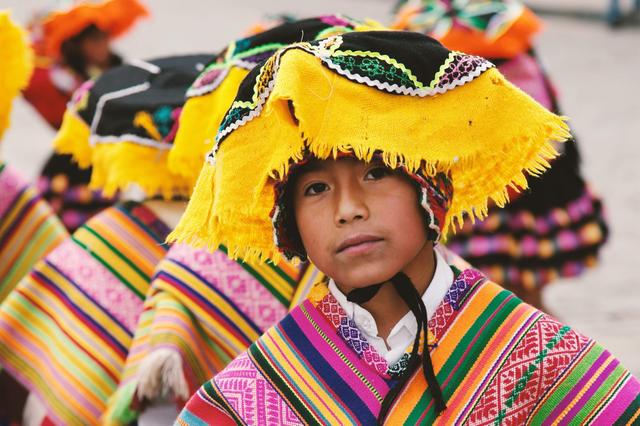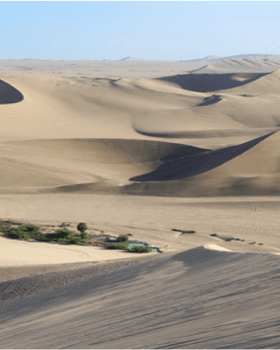

Rivers in Peru
rivers in peru: peru’s rugged and scenic waterwaysPeru is a country of diverse and powerful rivers, each carving its path through the rugged terrain of the Andes and dense jungles. These rivers, including the mighty Amazon, the Apurímac, and the Ucayali, contribute to Peru's thriving ecosystems and provide essential resources for locals and visitors alike. Some rivers, like the Urubamba, flow through iconic tourist destinations, while others, like the Marañón, are known for their dramatic landscapes. Whether for transport, recreation, or biodiversity, Peru’s rivers are vital lifelines. In this blog, we explore some of the most significant rivers in Peru and their importance to the country’s natural and cultural heritage.
Major Rivers in Peru
Peru is a country full of rugged and wild waterways, most of which originate in the Andes. By turns boisterous or tranquil; wild or calm, the major rivers in Peru feed three main basins. These are the Amazon, the Pacific Ocean, or Lake Titicaca. All three of these principal bodies of water are shared with at least one other country.
The rivers that run towards the Pacific tend to be short and precipitous, sometimes flowing interruptedly. Tributaries to the Amazon, counted among the world’s most diverse rivers, are longer and fuller. The rivers that flow into Lake Titicaca are overflowing yet more contracted.
These rivers, mainly originating as glacial snowmelt, course throughout her wilderness and urban areas. They provide food, power, habitat, transportation and recreation to Peruvians and visitors alike. In this blog, we’ll follow the watery journey of Peru’s most important rivers.
Urubamba River
Of all rivers in Peru, the Urubamba River is the one that most travelers encounter during their visit. The Urubamba winds along from Cusco to the historic sanctuary of Machu Picchu, snaking along the Sacred Valley floor. Touchpoints to this powerful river exist in Pisac, Urubamba, and Ollantaytambo, all of which may be on your Peru itinerary.
Ucayali River
Stretching 1,100 miles (1,771 km.), the Ucayali River is the longest among all Peru’s rivers. It begins in the Ucayali Region and travels northward to the port city of Pucallpa where many Amazon River cruises embark. It then follows a north-northeasterly course through the jungles of the remarkable Pacaya-Samiria National Reserve, known for its biodiversity. The Ucayali ultimately connects with the Amazon River in the port town of Nauta.
Mantaro River
Among all the rivers in Peru, the Mantaro River has an incredibly steep gradient of nearly five meters per kilometer. The force of its flow was sufficient to carve the Mantaro Valley, an important agricultural region for Lima. This 450-mile-long Mantaro River follows a long and complicated journey.
It emanates from the central highlands of Peru, near Cerro de Pasco, meandering eventually to the Amazon River. The Tambo, Ene, Marañón, and Ucayali Rivers each play a part in getting the Mantaro River’s waters into the Amazon. Hot tip: the best whitewater rafting can be found in the Izcuchaca and Tablachaca Canyon stretches of the Mantaro River.
Napo River
The Napo River starts its journey from the eastern Andes Mountains of Ecuador. Descending eastward, it makes it way to Peru and continues southeast through the dense jungles of northern Peru. There, it meets up with the Amazon River at a point around fifty miles downstream of Iquitos.
Its total Peru journey is 414 miles (667 km), making it the 10th in length amongst Peru’s rivers. The Napo is the last major Amazon River tributary before it flows into Brazil.
Putumayo River
The four country-traversing Putumayo River is the third longest of all Peru’s rivers. It begins in southwestern Colombia, continues along the Colombia-Ecuador border, and then follows the Peru-Colombia border to Brazil. Its full length is a grand total of 857 miles (1,380 km.) The river is a transport route for cargo headed for the Amazon in Brazil, where it is called the Icá.
Apurímac River
The Apurimac River is an important Peruvian waterway. Its 429-mile-long (690 km.) journey begins in the mountains of the Arequipa region and ends in the Cusco region. The 18,360-foot Nevado Mismi mountain feeds it with a steady supply of meltwater.
Among all rivers in Peru, it is one of the best for whitewater rafting and water sports. You will encounter the Apurimac as you journey on foot towards the Choquequirao archaeological site. Some say the Apurímac River is the true source of the Amazon River.
Huallaga River
Among the few Peruvian rivers that do not join the Amazon, the Huallaga River (707 miles), is the longest. It begins its northerly course in the central highlands of Peru in a region known as the Huánuco Region.
The Huallaga River passes small and off-the-beaten-tourist-trail high jungle cities like Tocache, Tingo Maria, and Bellavista. It connects with the Marañón River on the western fringes of the amazingly biodiverse Pacaya-Samiria National Reserve.
Marañón River
The Marañón River is the second in length among all of Peru’s rivers. It journeys 879 miles (1,414 km.) through the central highlands of Peru. It meets up with many smaller tributaries as it makes its way to the Amazon River. There it joins the Ucayali River in Nauta. This river is widely considered to be the main stem source of the Amazon River.
For its dizzyingly deep jungle gorges, rapids, and canyons, it has been called the Grand Canyon of the Amazon.
Yavarí River
The Yavarí River, fourth in length among Peruvian rivers, hugs the boundary between Peru and Brazil. It journeys for roughly 736 miles (1,184 km.), ultimately meeting up with the Amazon River. The Yavarí joins the Amazon in the Brazilian jungle town of Benjamin Constant, downstream from Iquitos.
Amazon River
Leaving the greatest for last, the Amazon River is the world’s second longest river after the Nile. Most of Peru’s rivers ultimately join up with the Amazon. Its origins in Peru lay at the confluence of the Ucayali and Marañón River in the town of Nauta. This joining of rivers provides particularly abundant food sources for animals like the Amazon pink river dolphin.
Tourist outfits often bring visitors here to catch a glimpse of the dolphins as they fish. The Amazon follows a northerly course from Nauta to Iquitos and then flows onward to Brazil.
The Amazon is a river of great beauty, biological diversity, and a plethora of myths and legends. A river cruise on the Amazon is the nature and aquatic experience of a lifetime. Contact Explorandes to arrange the details for your Amazon River journey.

March - December
5 days / 4 nights

April - October
12 days / 11 nights

April - December
5 days / 4 nights

April - October
6 days / 5 nights






